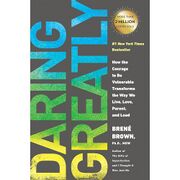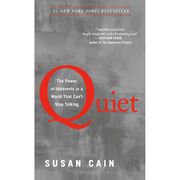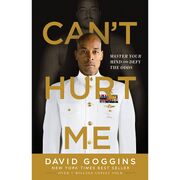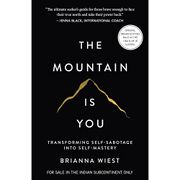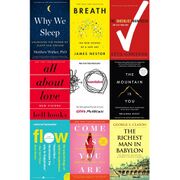The Gifts of Imperfection
🍎 Healthy brain food
"Ordinary courage is about putting our vulnerability on the line."
— Brené Brown, The Gifts of Imperfection (2010)
Introduction
| The Gifts of Imperfection | |
|---|---|
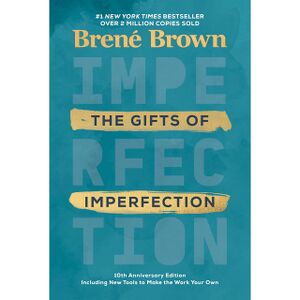 | |
| Full title | The Gifts of Imperfection: Let Go of Who You Think You're Supposed to Be and Embrace Who You Are |
| Author | Brené Brown |
| Language | English |
| Subject | Self-acceptance; Self-esteem; Personal development |
| Genre | Nonfiction; Self-help |
| Publisher | Hazelden |
Publication date | 27 August 2010 |
| Publication place | United States |
| Media type | Print (paperback); e-book; audiobook |
| Pages | 137 |
| ISBN | 978-1-59285-849-1 |
| Goodreads rating | 4.3/5 (as of 6 November 2025) |
| Website | brenebrown.com |
📘 The Gifts of Imperfection distills Brené Brown’s qualitative research on shame into a framework she calls “Wholehearted Living,” which emphasizes worthiness, courage, and connection as learnable practices.[1] First published by Hazelden in 2010, the book organizes its advice around ten guideposts that pair habits to cultivate with habits to release (for example, “letting go” of comparison or scarcity).[2] Brown balances a conversational register with social-science grounding, a mix her publisher describes as the voice of a “kitchen-table friend” and a researcher’s rigor.[3] The 10th-anniversary edition underscores its reach: the publisher reports more than two million copies sold across thirty-five languages and bills the title as a #1 New York Times bestseller.[3] The book has shown durable momentum on national lists, including a return to USA Today’s top 25 on 17 September 2020.[4]
Chapter summary
This outline follows the Hazelden paperback edition (2010).[2][5]
🧭 1 – Introduction: Wholehearted Living. In early 2008, Brown wrote a brief blog post about “breaking” her dig-deep button—her old habit of pushing through exhaustion—and returned to her field notes to find a better way to refuel without the usual overdrive. She landed on a simple replacement sourced from her interviews: DIG Deep—be Deliberate in thoughts and behaviors, get Inspired to make different choices, and then get Going with small actions. A mundane scene makes it practical: closing the laptop to exit a Facebook fog and finally watching the movie still sitting in a neglected Netflix envelope on her desk. Wholehearted Living is framed as a daily practice built on courage, compassion, and connection rather than a finish line or personality trait. The path proceeds from tools to love/belonging/worthiness, then obstacles, and finally ten guideposts that translate ideas into habits. Definitions remain plain and are cross-checked with existing research (for play, she cites Stuart Brown). A theologian’s reminder—that courage is learned by “couraging”—keeps the focus on repetition and small moves. Ordinary settings and repeatable behaviors show that worthiness grows in practice, not in theory. The central move is to swap willpower-driven performance for a cycle of intention, inspiration, and action that makes room for rest and vulnerability. In effect, these micro-choices change behavior first, and identity follows, which anchors living “from a place of worthiness.” No matter what gets done and how much is left undone, I am enough.
🤝 2 – Courage, Compassion, and Connection: The Gifts of Imperfection. The “Gun-for-Hire Shame Storm” begins at a large public elementary school, where the principal introduces Brown like a pro-wrestling headliner and promises she’ll “set us straight,” priming the room with resistance. As the applause fades, she feels the crowd’s agitation and her own rising panic while a résumé-style introduction is read from the stage. Afterward, the mental slow-motion replay starts—the classic shame reel—until she remembers to call someone who has earned the right to hear the story. The narrative sorts common misfires (one-upping, silver-lining, or pep-talking) from empathy that stays present, resists fixing, and shares vulnerability. From there, the focus turns to practice: reach out quickly, tell the story plainly, and let connection do its work instead of hiding. A short etymology lesson defines compassion as “to suffer with” (Latin pati + cum), explaining why blame and self-protection often surface before empathy. The same logic applies at work: real connection includes boundaries and accountability, not just warmth. Shame loses energy when spoken into empathic connection; relational reciprocity—reaching out with courage activates compassion, restores connection, and dismantles secrecy’s grip. Shame loves secrecy.
❤️ 3 – Exploring the Power of Love, Belonging, and Being Enough. At a table covered with interview transcripts and a file tab labeled “Wholehearted,” Brown distills thousands of coded stories from men and women aged 18 to 87 across the United States into working definitions of two gauzy words: love and belonging. Rather than quoting slogans, she assembles definitions from how participants actually describe feeling seen, known, and accepted, then tests those definitions against edge cases raised by her data. Hard questions flagged earlier—what love is, whether betrayal can coexist with love, and why hustling to “fit in” often erodes true belonging—are answered in everyday language. Practice stays central: love shows up as behaviors we can choose and repeat, and belonging depends on showing up as ourselves rather than performing for approval. Worthiness sits at the center; without it, the search for belonging collapses into comparison and people-pleasing. Short vignettes show how boundaries, gratitude, and vulnerability sustain connection over time. Accessible, actionable language keeps abstractions tied to habits. Together these moves recast love as a practice and belonging as an outcome of self-acceptance instead of a prize for perfection. Worthiness is a precondition for love and belonging, not a reward; psychological safety—believing “I am enough”—reduces self-protection and opens the door to vulnerability and connection.
🚧 4 – The Things That Get in the Way. Picture a breakfast-room table, a red chair, and a sheet of poster paper split into two columns: Do and Don’t. On the left sit words gathered from interviews—worthiness, rest, play, gratitude, creativity; on the right, the obstacles pile up—perfectionism, numbing, certainty, exhaustion, self-sufficiency, fitting in, judgment, scarcity. Seeing the contrast sparks sticker shock and tears, and the scene becomes a map of the barriers that derail Wholehearted Living long before the ten guideposts can take root. The internal soundtrack—“never good enough” and “who do you think you are?”—drives predictable reactions like overwork, people-pleasing, and emotional anesthetics. Perfectionism functions not as healthy striving but as a shield against shame, one that increases fear and avoidance over time. Scarcity mindsets amplify comparison, while chronic exhaustion masquerades as virtue even as it crowds out play and rest. The discussion keeps swinging back to choices we can see and change—saying no, setting boundaries, noticing numbing—and to the social settings (home, school, work) where these habits calcify. Rather than promising quick fixes, the obstacles are framed as daily patterns we can interrupt. The main blockers are not lack of knowledge but scarcity, perfectionism, and numbing that trade short-term relief for deeper disconnection; building skills—naming triggers, practicing self-compassion, and choosing connection—rewires responses so the guideposts can take root.
🎭 5 – Guidepost #1: Cultivating Authenticity: Letting Go of What People Think. A familiar scene opens the idea: standing at a mirror before a community event, with a polished bio on the phone and an outfit chosen to impress, the choice becomes whether to perform or to show up as the person at the kitchen table. Authenticity is framed as a practice made of small, visible decisions—saying no when a yes would be for approval, wearing what fits instead of what signals status, and telling the truth without oversharing. Trade-offs under pressure—fitting in versus belonging, posturing versus connection—accumulate into a life that feels either aligned or armored. Boundary setting appears as a concrete behavior that supports authenticity in real time. DIG Deep prompts—get deliberate, get inspired, get going—turn the idea into repeatable steps to try the same day. Expectations from work, family, and social media are treated as predictable headwinds rather than personal failings, which keeps the focus on what can be practiced. Examples stay ordinary—how introductions are written, what stories are shared, which commitments are kept—so the practice is observable and testable. Authenticity is less a single reveal and more consistency across settings. The central move is to replace impression management with aligned choices that respect values and limits, lowering shame and inviting connection until “being seen” becomes a habit rather than a performance.
🤗 6 – Guidepost #2: Cultivating Self-Compassion: Letting Go of Perfectionism. In 2003 at the University of Texas at Austin, psychologist Kristin Neff published the 26-item Self-Compassion Scale, which captures self-kindness, common humanity, and mindfulness alongside their opposites. That structure gave practitioners language and a process for responding to failure without harsh self-judgment. Those components map onto everyday perfection traps—overpreparing, people-pleasing, and hiding—by showing how each behavior tries to ward off shame but ends up shrinking learning and joy. Concrete practices include talking to yourself the way you’d talk to a trusted friend, noticing isolating thoughts (“I’m the only one”), and naming emotions without exaggeration or suppression. Brief stories illustrate how self-compassion and accountability can coexist: own a mistake, set it right, and step out of the spiral. Healthy striving (driven by values) is distinguished from perfectionism (driven by evaluation and fear) so the fork in the road is visible. A small set of habits—kind self-talk, reality-checking expectations, mindful pauses—becomes the toolkit for moments when the old script would demand flawlessness. Perfectionism is reframed as a protection strategy that backfires by increasing avoidance and comparison. Self-compassion, by contrast, creates psychological safety for trying, failing, and learning in public, allowing worthiness to surface as a lived experience rather than a goal line. Treating yourself with the same care you extend to others loosens perfectionism’s grip and restores room for growth.
🌱 7 – Guidepost #3: Cultivating a Resilient Spirit: Letting Go of Numbing and Powerlessness. Resilience is anchored to hope theory from the University of Kansas and C. R. Snyder: agency (goal-directed energy) plus pathways (plans to meet goals), assessed with a 12-item Adult Hope Scale used in clinical and community settings. With that backbone, two real-world sequences are contrasted: numbing difficult feelings with familiar anesthetics (overwork, screens, substances, frantic busyness) versus naming the feeling, checking the story, and taking one small step that restores agency. “Critical awareness” provides a method—reality-check cultural messages about perfection, success, and scarcity—so choices are made from values rather than fear. Spirituality appears as connection to something larger than self and is grounded in love and compassion, whether expressed inside or outside religious practice. Practical moves include asking for help, building routines for rest and reflection, and keeping commitments that create momentum when motivation dips. Short examples show how reaching out to a trusted person interrupts powerlessness faster than private spirals. The tone remains behavioral: resilience grows from repeated cycles of noticing, naming, and acting. Numbing temporarily reduces pain but also trims joy and agency; hope grows when plans and energy meet, even in small doses. Aligning action with values turns adversity into a site for skill building instead of a cue to shut down.
🙏 8 – Guidepost #4: Cultivating Gratitude and Joy: Letting Go of Scarcity and Fear of the Dark. A stream of evidence runs through this guidepost, including randomized studies led in 2003 by Robert A. Emmons (University of California, Davis) and Michael E. McCullough (University of Miami) showing that “counting blessings” in brief, regular lists reliably boosts positive affect compared with logging hassles or neutral events. Using that research as a floor, the section distinguishes happiness (an emotion) from joy (a spiritual way of engaging with the world) and makes gratitude the daily behavior that invites joy to show up more often. Scarcity’s soundtrack—“never enough time, money, certainty”—is treated as a learned mental habit that narrows attention to risk and robs good moments as they happen. A counter-habit follows: name specific things you are thankful for out loud, write them down at set times, and share them in ordinary rituals like family meals. The jolt of anticipatory dread when life is going well is normalized, with a response attached: notice the fear, then practice gratitude in the same breath. Concrete and brief examples—three lines in a notebook, a thank-you note, a quiet pause before bed—make the practice easy to test. Over time, the lists become lenses; attention shifts from scanning for what’s missing to recognizing what’s present. Gratitude trains attention and language, which expands capacity for joy even when uncertainty remains. Practiced consistently, this loop weakens scarcity’s hold and steadies the nervous system when the “fear of the dark” creeps in.
🔮 9 – Guidepost #5: Cultivating Intuition and Trusting Faith: Letting Go of the Need for Certainty. A kitchen counter at night, a paper calendar open beside a phone filled with unanswered texts and a stack of half-read notes, and a decision that cannot wait for perfect information—this compact scene frames the lesson. The process is concrete: name what is known, circle what is missing, make the next right move, and check the story with someone who has earned the right to hear it, so action doesn’t stall while certainty is unavailable. Intuition is untangled from impulse by treating it as pattern recognition built from lived experience and values, not a mood swing or a hunch chasing relief. Faith is practiced daily rather than held as doctrine: a willingness to move in the dark with integrity when data run out. Short rituals—quiet minutes before bed, a brief prayer, a walk without headphones—create space to hear the signal underneath the static. When anxiety spikes, the steps are the same: pause, reality-check, choose a small move, and tolerate the wobble that comes with uncertainty. By shrinking decisions to the next step and anchoring them in values, the need to control outcomes softens into trust. Intuition and faith work together here: one listens for patterns, the other supplies courage to proceed without guarantees, keeping life aligned with worthiness rather than managed by fear.
🎨 10 – Guidepost #6: Cultivating Creativity: Letting Go of Comparison. A blank page lies on a kitchen table while a social-media feed hums with finished masterpieces and spotless studios. The first instruction is deliberately small: set a short timer, pick up a cheap pen or a handful of markers, and make something that didn’t exist ten minutes ago. A simple practice emerges—collect images and words in a sketchbook, take one photo on a daily walk, write a paragraph no one will read—so creative energy has a low bar to entry. Because comparison steals attention, boundaries are explicit: limit scrolling before and after making, and share work only with people who can be trusted to respond with care. Originality is treated as expression rather than novelty, which lets ordinary details—handwriting, color choices, the way you see a doorway—count as creative signatures. Predictable derailers are named: waiting for inspiration, grading yourself against experts, and quitting early when the first draft looks clumsy. Finishing tiny pieces on purpose builds a bank of evidence that creativity is available on weekdays, not just in rare bursts. Over time, the habit shifts identity from “not creative” to “someone who makes.” Creativity widens attention and strengthens self-trust, dissolving the urge to keep score against other people’s lanes. Letting go of comparison restores focus to your own path, making room for joy and connection to grow.
🛌 11 – Guidepost #7: Cultivating Play and Rest: Letting Go of Exhaustion as a Status Symbol and Productivity as Self-Worth. Research on play—synthesized by psychiatrist Stuart Brown, founder of the National Institute for Play and author of the 2009 book “Play: How It Shapes the Brain, Opens the Imagination, and Invigorates the Soul”—provides the backbone here, especially his description of play as voluntary, absorbing, and time-bending. Through that lens, restorative play (board games on the floor, backyard tinkering, picking up an instrument) is separated from numbing disguised as leisure (mindless scrolling that leaves you more wired than before). A simple audit follows: list a few activities that leave you lighter afterward and the ones that masquerade as rest but don’t restore anything. Family and team examples make it practical—block an evening without agendas, protect regular sleep, and plan small play dates with the same seriousness as meetings. Busyness is called out as a cultural badge and “earning” rest as a trap, since the standard never arrives. Play pairs with boundaries—saying no to preserve unstructured time—and with rituals that signal “off-duty,” like a walk at dusk or devices parked away from the bed. The goal is renewal, not idleness: refuel capacity for courage, compassion, and connection. Play and rest refill the tank that perfectionism and scarcity drain, stabilizing mood and expanding resilience. When restoration becomes non-negotiable, worthiness is no longer tied to output, and connection stops competing with work for oxygen.
🧘 12 – Guidepost #8: Cultivating Calm and Stillness: Letting Go of Anxiety as a Lifestyle. The scene is a workday morning: inbox pings, a calendar stacked to the margins, and a pulse that runs ahead of the clock. Practice starts with a pause—lengthen the exhale, unclench the jaw, place both feet on the floor—and then a short inventory that names what is being felt without judgment. Calm is framed as perspective plus regulation in real time; stillness is time deliberately cleared for reflection, whether that looks like ten quiet minutes, basic breathwork, or a short, no-music walk. The reflex to catastrophize when things are going well is normalized, with a counter attached: gratitude in the same breath as fear to keep the nervous system from seizing the wheel. Tools repeat across settings—breathing before hitting send, brief meditations between meetings, screens out of the bedroom—so the habit is portable. Calm is distinguished from passivity; boundaries and honest conversations often produce more peace than people-pleasing ever does. Small daily practices compound into a baseline that makes high-stress moments less contagious. The shift is from living on constant alert to moving through uncertainty with steadier attention. As calm and stillness take root, anxiety stops defining identity and becomes a cue for skills you already have.
💼 13 – Guidepost #9: Cultivating Meaningful Work: Letting Go of Self-Doubt and "Supposed To". Sunday evening at a kitchen table, a printed job description sits beside a short list of personal values and a column titled “supposed to,” the stories about prestige and approval that have shaped past choices. The next exercise is practical: name the few strengths that feel energizing, list the tasks that drain, and sketch a small experiment that uses more of the former and less of the latter. A boundary script follows—decline a misaligned role or renegotiate a deliverable—then check the plan with someone who offers empathy instead of evaluation. Small pilot projects become proof that “meaningful” is less about job title and more about daily alignment with gifts, service, and learning. Self-doubt often disguises itself as prudence, and comparison tries to reset the compass toward recognition. Keeping a short “evidence list” of work that mattered helps counter the old narrative in tough weeks. When the pressure to please spikes, return to values, not to hustling for worth. Over time, modest experiments add up to a workload that fits like a well-used tool rather than a costume. Meaning grows where strengths meet contribution and boundaries protect the space for both, shifting identity from performing “supposed to” toward stewarding real gifts. That shift strengthens connection and reduces shame’s leverage.
💃 14 – Guidepost #10: Cultivating Laughter, Song, and Dance: Letting Go of Being Cool and "Always in Control". A living room turns into a small dance floor after dinner—lights down, a playlist on, and bare feet on a worn rug—while the inner critic argues for a seat on the couch. Treat these ordinary rituals as training: laugh without a preface, sing without grading pitch, and dance without waiting to feel confident. Family and friend experiments keep it simple—one song before bedtime, a few lines sung in the car, a silly game that guarantees giggles. Rules for safety are explicit: no mocking, no recordings, and no weaponizing stories later. “Cool” is just armor; control kills spontaneity and closeness. Laughter loosens perfection’s grip; shared music and movement pull attention from self-monitoring back to the moment. In spaces that honor play, people remember what it feels like to belong without performing. The body becomes a coauthor of connection, not just a vehicle for productivity. Practiced often, these tiny acts widen joy and thicken trust. Letting go of cool and control restores a more human rhythm, where presence matters more than polish.
📝 15 – Final Thoughts. The closing pages return to the same simple setting—a notebook, a pen, and a short list of practices that felt doable this week—and invite choosing one or two guideposts to work with at a time. Emphasis falls on maintenance, not mastery: repeat the moves that helped, retire the ones that didn’t, and expect the work to cycle as seasons change. A brief reminder appears about companions on the path—people who respond with empathy and accountability rather than advice—and how sharing progress in small, honest updates keeps momentum alive. Shrink goals until they fit inside a normal day: a boundary kept, a gratitude note written, a calm breath taken before a hard call. When setbacks hit, start again where you are, not where you think you should be. “Today I did” lists replace fantasies about the future self. The thread through every page is worthiness in the present tense, not a prize for perfect execution. The finish line is intentionally plain: keep practicing, keep telling the truth, and keep choosing connection over performance, until wholehearted living becomes less a project and more a way to move through ordinary time.
🧪 16 – About the Research Process: For Thrill-Seekers and Methodology Junkies. Methods step behind the scenes to a university office lined with file boxes, coded transcripts, and memo notebooks—an overview of a grounded-theory approach built from interviews, field notes, and constant comparison. Patterns are allowed to emerge from lived stories before being checked against existing literature, and categories are refined through iterative coding and theoretical sampling. Reliability shows up as disciplined practices: keep an audit trail, engage in peer debriefing, and return to participants’ language to avoid shaping results to fit wishes. Definitions used throughout the book—shame, empathy, resilience, authenticity—are traced to converging data rather than imported wholesale. The process values saturation over speed; a category stays provisional until it holds across diverse cases. Findings are presented as working models that guide practice and invite further testing. The tone mirrors the rest of the book: clear, plain, and anchored in behaviors that can be observed and repeated. By rooting claims in method and transparency, the research gives a sturdy base for everyday experiments. That credibility is not decoration; it is scaffolding that lets vulnerability, courage, and connection be practiced with confidence.
Background & reception
🖋️ Author & writing. Brown is a research professor at the University of Houston’s Graduate College of Social Work, where she holds an endowed chair; her academic role informs the book’s empirical stance.[6] She traces the book to a grounded-theory program of research she labeled “Wholehearted Living” and explicitly states that she reported those findings in The Gifts of Imperfection.[1] The content coalesces into ten guideposts—such as cultivating gratitude and joy while letting go of scarcity—outlined across her official materials and the book’s table of contents.[7][2] The voice blends research citations with stories and practical moves, a tone her publisher highlights as both scientifically grounded and warmly conversational; the anniversary edition also adds a new foreword and tools for application.[3]
📈 Commercial reception. The publisher reports that the book has sold more than two million copies and has been translated into thirty-five languages, and it markets the title as a #1 New York Times bestseller (publisher claim).[3] The title has also reappeared years after release on aggregated national lists—for example, charting in USA Today’s top 25 for the week of 17 September 2020.[4]
👍 Praise. In a 2020 Guardian column, Oliver Burkeman pointed readers to Brown’s 2010 book as framing imperfection as a path to a wholehearted life, not an obstacle.[8] The Atlantic summarized her core claim—that vulnerability counters shame and can express courage—when discussing her research’s public impact.[9] Public-radio program On Being likewise presented Brown’s findings as a corrective to perfectionism, highlighting how courage “is born out of vulnerability.”[10]
👎 Criticism. Coverage has also described Brown as a “celebrity self-help” figure—a label she rejects—signaling concerns about popularization and genre framing.[11] A 2022 Guardian essay on “Tedcore” expressed skepticism toward parts of the self-help canon, critiquing some of Brown’s definitions and takeaways as unpersuasive to that writer.[12] In 2024, Literary Hub argued that Brown’s popular framing of vulnerability can overlook structural inequities, questioning its applicability for the most precarious communities.[13]
🌍 Impact & adoption. The book appears on university reading lists and syllabi—for example, a Spring 2025 Personal Branding course at the University of Florida lists it as required reading, and Georgetown University’s Health & Wellness Coaching program included it on its required texts in 2019.[14][15] Brown’s facilitation programs (e.g., The Daring Way™) build on the same research and are used in clinical and organizational settings.[16] She also offers a “Wholehearted Inventory” instrument aligned to the book’s guideposts, which has been deployed for individual and organizational self-assessment.[17]
Related content & more
YouTube videos
CapSach articles
Enjoyed this page?
📚If this page The Gifts of Imperfection inspired or helped you today, a small coffee helps us keep creating and sharing more. Your support truly matters.👏
References
- ↑ 1.0 1.1 "Research". Brené Brown. Retrieved 21 October 2025.
- ↑ 2.0 2.1 2.2 "The Gifts of Imperfection (sample)" (PDF). Hazelden Publishing. Hazelden Publishing. 2010. Retrieved 6 November 2025.
- ↑ 3.0 3.1 3.2 3.3 "The Gifts of Imperfection (10th Anniversary Edition)". Simon & Schuster. Simon & Schuster, Inc. Retrieved 21 October 2025.
- ↑ 4.0 4.1 "US-Best-Sellers-Books-USAToday". The Washington Post. 17 September 2020. Retrieved 21 October 2025.
- ↑ "The gifts of imperfection : let go of who you think you're supposed to be and embrace who you are". WorldCat. OCLC. Retrieved 6 November 2025.
- ↑ "Brené Brown: Graduate College of Social Work". University of Houston. Retrieved 21 October 2025.
- ↑ "Ten Guideposts for Wholehearted Living". Brené Brown. Retrieved 21 October 2025.
- ↑ Burkeman, Oliver (27 June 2020). "Struggling to achieve perfection? This nautical metaphor might help". The Guardian. Retrieved 21 October 2025.
- ↑ "'Messages of Shame Are Organized Around Gender'". The Atlantic. 26 April 2013. Retrieved 21 October 2025.
- ↑ "Brené Brown — The Courage to Be Vulnerable". On Being. 29 January 2015. Retrieved 21 October 2025.
- ↑ Cadwalladr, Carole (22 November 2015). "Brené Brown: 'People will find a million reasons to tear your work down'". The Guardian. Retrieved 21 October 2025.
- ↑ "Tedcore: the self-help books that have changed the way we think". The Guardian. 18 May 2022. Retrieved 21 October 2025.
- ↑ "Why Brené Brown's Gospel of Vulnerability Fails the World's Most Vulnerable". Literary Hub. 21 February 2024. Retrieved 21 October 2025.
- ↑ "Personal Branding for Communicators (Spring 2025)" (PDF). University of Florida. Retrieved 21 October 2025.
- ↑ "Certificate in Health & Wellness Coaching: Required Texts" (PDF). Georgetown University School of Continuing Studies. 31 January 2019. Retrieved 21 October 2025.
- ↑ "The Daring Way™". Brené Brown. Retrieved 21 October 2025.
- ↑ "Wholehearted Inventory". Brené Brown. Retrieved 21 October 2025.

